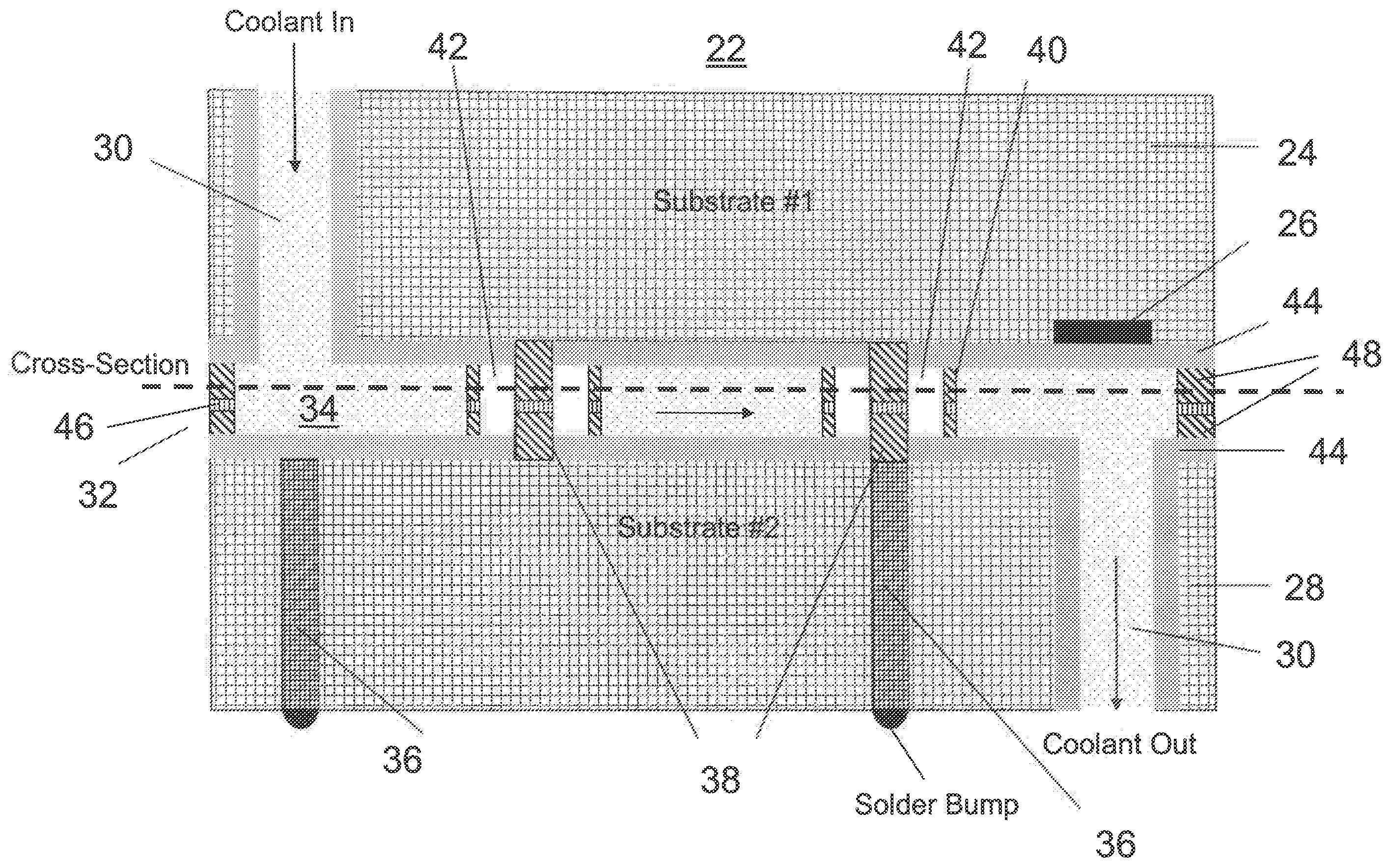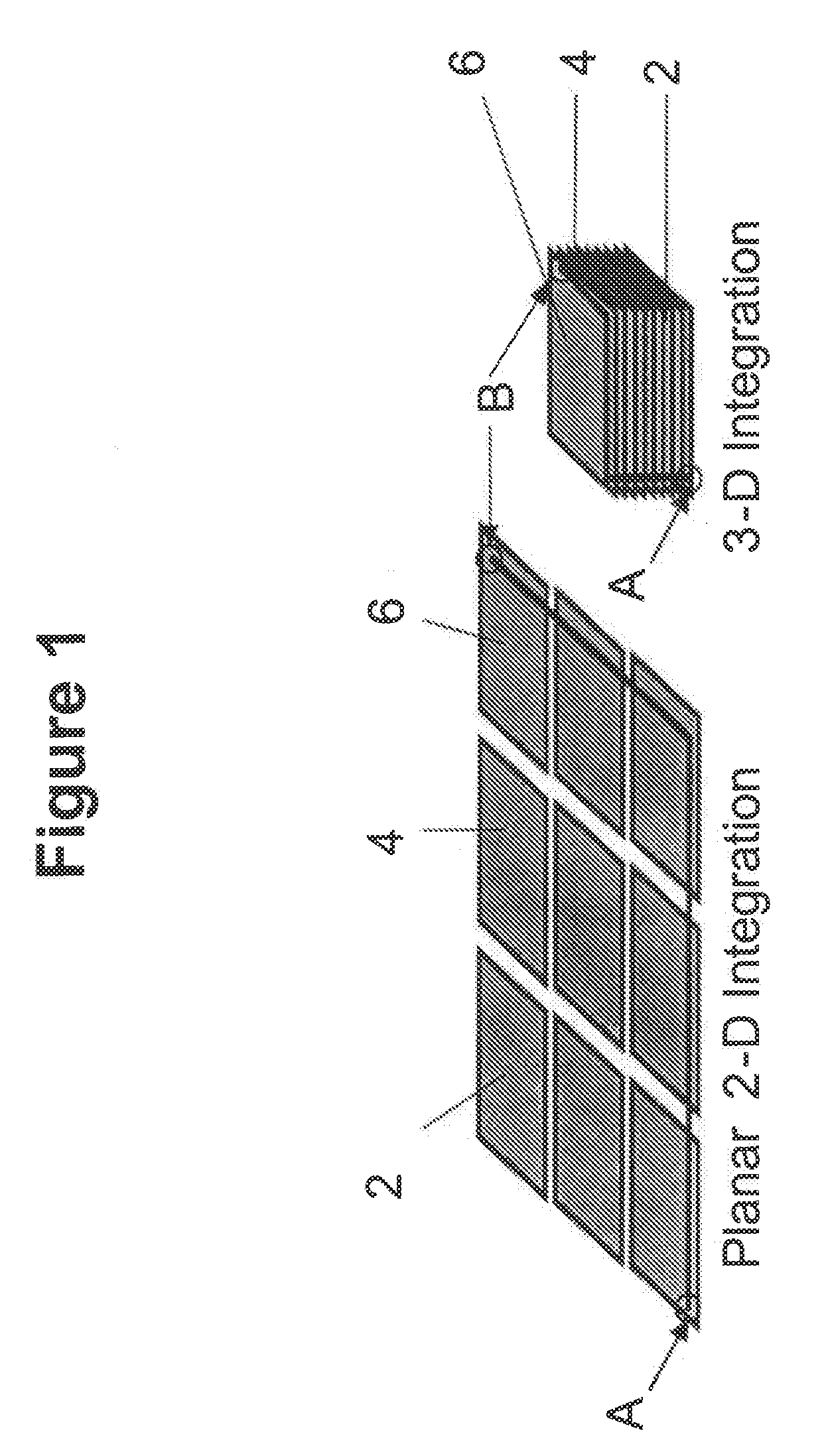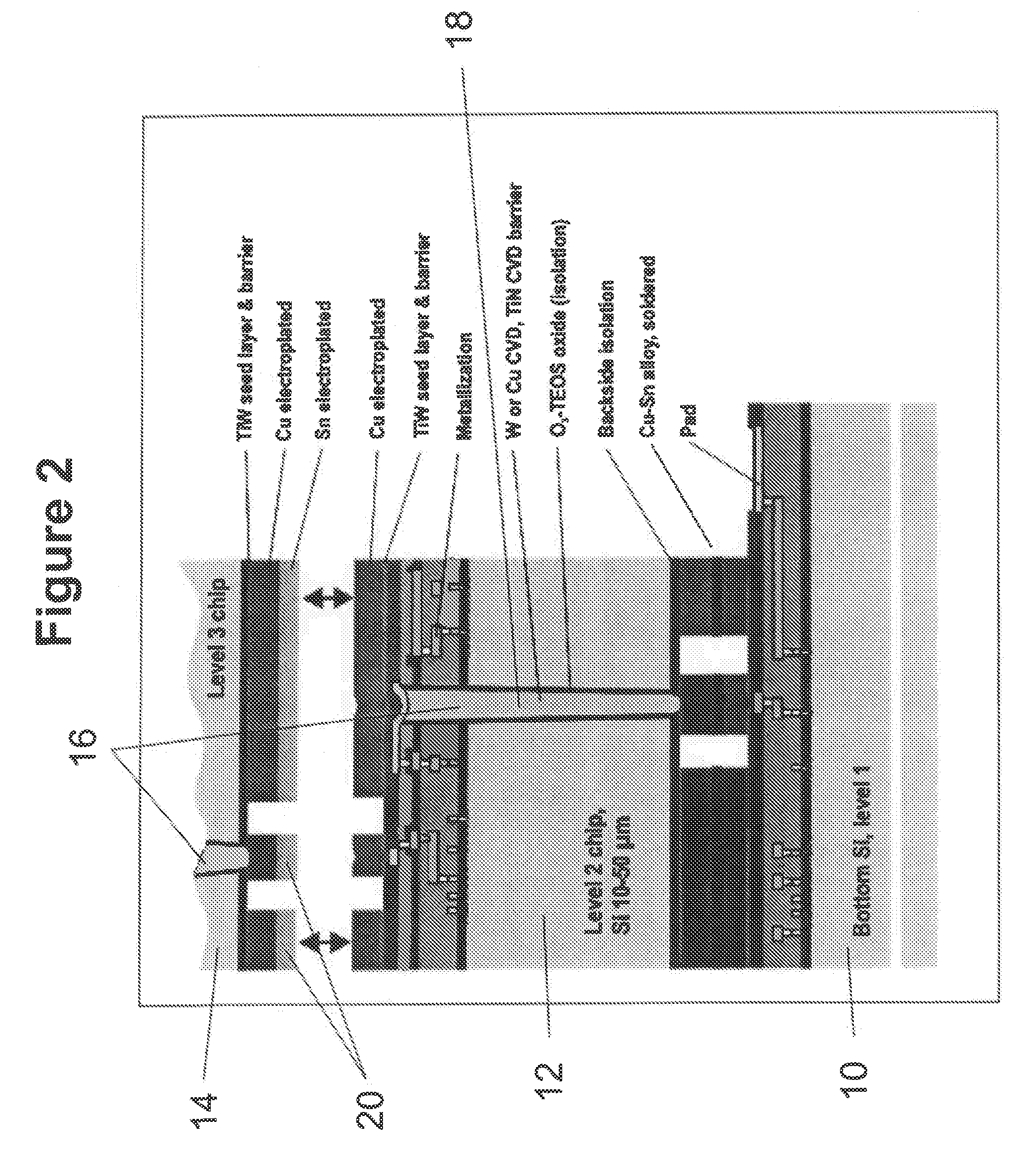Structure and process for electrical interconnect and thermal management
a technology of electrical interconnection and thermal management, applied in the direction of cooling/ventilation/heating modification, semiconductor device details, semiconductor/solid-state device details, etc., can solve the problems of increasing interconnect delay dominating ic performance, reducing the size of electronic functions, and consuming more and more of the available power and delay budgets
- Summary
- Abstract
- Description
- Claims
- Application Information
AI Technical Summary
Problems solved by technology
Method used
Image
Examples
Embodiment Construction
[0040]The problem of extracting heat from an integrated circuit (IC) can be a significant problem, especially as the circuit density (and the waste heat dissipation) for chip sets are increasing. This problem is expected to be significantly more severe in 3D integrated circuits where the volumetric density of active and passive devices is dramatically increased and / or the thermal path length from an active device to the surface can be considerably longer. The problem is apparent in IC production past the 65 nm node in addition to current high performance devices at older IC production nodes, higher power analog / mixed signal ICs, IR focal plane arrays, or any structure that has required liquid or air cooling directly behind a functional or non-functional substrate.
[0041]More specifically, 3D circuits pose thermal management challenges due to the increase in total power generated per available surface area for cooling. In addition, the power generated per unit volume within the 3D cir...
PUM
 Login to View More
Login to View More Abstract
Description
Claims
Application Information
 Login to View More
Login to View More - R&D
- Intellectual Property
- Life Sciences
- Materials
- Tech Scout
- Unparalleled Data Quality
- Higher Quality Content
- 60% Fewer Hallucinations
Browse by: Latest US Patents, China's latest patents, Technical Efficacy Thesaurus, Application Domain, Technology Topic, Popular Technical Reports.
© 2025 PatSnap. All rights reserved.Legal|Privacy policy|Modern Slavery Act Transparency Statement|Sitemap|About US| Contact US: help@patsnap.com



